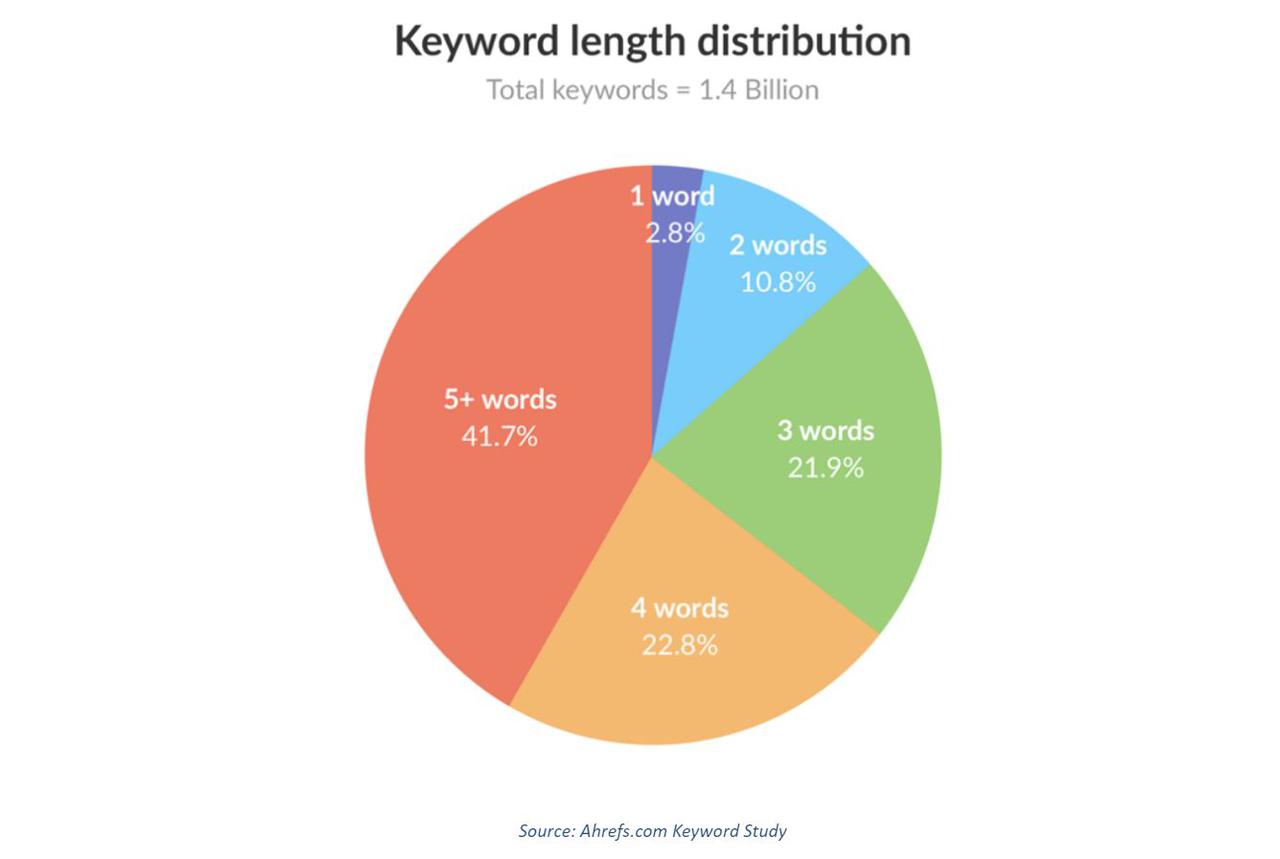Let’s face it, if you’re not ranking on page one of Google search results, visitors aren’t getting to your site. “Getting on page one” remains the gold standard of SEO digital marketing.
And it used to be simple. Once upon a time, the way to achieve a top ranking was through “Keyword Optimization.” But living in this new era of search engines powered by Artificial Intelligence, Google algorithms are smarter than ever before. And as a result, Keyword Optimization and traditional SEO don’t work as well as they used to. Still, organic search remains the best investment for businesses looking to grow over time.
If you’re hoping to move up in the ranks of Search Engine Results Pages, it may be time to upgrade to a new SEO-boosting strategy. Google’s gatekeeper John Mueller confirms that what’s rewarded and valued on SERPs today is STRONG CONTENT that provides valuable information, rather than a straight, transactional message.
The direction is clear: To rank highly, brands must employ a more robust organizational system—such as one built on Topic Clusters and Pillar Pages. Building your website with this system in mind will not only improve your organic search results, it will also make your site easier to navigate for the average user.
How SEO Used to Work: Keyword Optimization
If you’ve ever built your own website or worked with a digital marketing agency in the past, you probably went through a keyword optimization exercise that looked something like this:
1) Create a list of keywords relevant to your business
2) Check analytics to see which of these keywords were being searched by consumers
3) Narrow that list down further by finding a niche where there was little competition from other businesses
4) Create website content that includes these keywords.
Keyword Optimization worked well for a while, but eventually companies discovered they could boost their rankings through “keyword loading”—cramming as many keywords as possible onto their websites, with little thought to user experience. As a result, the Internet went through a phase where top search results often contained spammy websites that were useless to consumers.
How SEO Works Now: Topic Clusters and Pillar Pages
Thankfully, Google has gotten smarter, and instead of ranking websites based on how many times they used a keyword, the newest algorithms rank pages based on how organized they are, how “expert” they appear to the rest of the Internet, and how explicitly they seem to address your specific queries.
Let’s start with the last of these:
Specificity
Not long ago, most Internet searches contained just one or two words. For example, “Local Realtor.” But today nearly 65% of all searches contain four or more words. We call these, “Long tail searches” and they include not only terms that you type in, but also voice searches performed through Alexa and Siri (12% of all searches are voice searches*).
This is good news for companies and consumers alike. Most Internet users are not looking for general information about a topic like real estate—they have a very specific question in mind that is tied to a specific action they desire to take. For example, I recently moved from Seattle to Tennessee. When looking for a local realtor, I would have been overwhelmed with useless results if I had used a short search term. Instead, I used very specific queries like, “Best Nashville realtors with virtual walkthrough” that fit my particular context as someone who wanted to start looking at houses while I was still living on the other side of the country.

These screenshots illustrate the difference between search results for a general term (realtor Nashville) and a long tail search term (best Nashville realtor with virtual walkthrough). Because the results on the right specifically match my query, they rank at the top and the sites on the left that dominate a general search don’t even appear.

Expertise
The Google algorithm also looks at how expert your website appears to other sites. In short, the more external sites that link to your site, the higher your search ranking will be, especially if the sites linking to you are themselves viewed as expert sites. (Iin other words, don’t try to set up a hundred shell sites to backlink to your site—it won’t work.).
Organization
Whether or not your website is viewed as an expert and matches long tail search terms in large part has to do with how organized it is. Having a lot of content may help your site rank higher in search results, but if your content isn’t easily accessible, if you don’t have enough internal and external links set up, you will have built a content database that nobody is seeing. Not sure if this is you? Ask your web team if you have any pages on your site that don’t get any traffic. If you have a lot of unviewed pages, then you’re wasting time and money that could be better spent if you had a content and organization strategy. That’s where topic clusters and pillar pages come in.
Topic Clusters and Pillar Pages
Simply put, a topic cluster is a way of structuring a website that links all of your content together by subject. This helps it rank higher in SEO and makes it more user friendly. Without a topic cluster organizational structure, most websites have a homepage, product or information pages, and a blog that focuses on capturing traffic from keywords. As search phrases became longer, websites had to create multiple blogs and content pieces in order to target these more specific phrases. And because a single content piece isn’t enough to earn first page search ranking, websites became content mills full of redundant blog articles. Yuck. Even Hubspot had this problem— until they discovered the power of topic clusters.
Here’s an example of what a website structure looks like before using topic clusters:

And here’s what it should look like afterwards:

In the first image, each color/shape represents a blog or content piece about a particular topic or keyword. Although the site has a lot of content, it is disorganized, and none of it links to other content, so Google does not know that the content is related, and the site is ranked lower in search results.
In the second image, the same content is organized around pillar pages that contain broadly comprehensive information about each topic and link to each of the cluster pages. Each cluster page focuses on specific long-tail keywords, or subtopics, and zooms in on a particular aspect of the pillar topic. But they aren’t formulaic or loaded with clunky keywords—they are readable and provide useful information.
Here’s what a pillar page/topic cluster might look like if we zoomed in on one related to inbound marketing:

The pillar page in this example is a lengthy page on Inbound Marketing, and would include in-text links to cluster pages on Inbound Marketing KPIs, Lead Nurturing, Persona-based Marketing, and so forth. At the same time, each cluster page links back to the pillar page. As Google crawls the site, it notes all of the links leading to the pillar page, and will boost its rank as a trusted and authoritative voice on the topic of Inbound Marketing.
Creating Your Own Topic Clusters
If you have a content-heavy website that isn’t ranking very well, don’t despair. You don’t have to toss everything and start over to take advantage of a topic cluster strategy. You can simply reorganize and repurpose your existing content to create pillar pages, then create backlinks so that all of your existing content functions like cluster pages (we do this all the time with clients who have existing websites but want a new one. Our AI-assisted site builder scrapes old content and reorganizes into topic clusters).
Here’s a Simple 3-Step Plan to Power-Up Your Site with SEO Pillar Pages and Topic Clusters
Before you do anything else, sit down and decide what you want to rank for. Run a SWOT analysis on your website and your top competitors, and figure out what your competitive advantage is. Then choose topics that are important for your business, and that have at least 1,000 searches a month. The tool I use is Keywords Everywhere, a free browser add-on that shows search volume and related keywords anytime you search for something. Don’t just duplicate what your competitors are doing, unless you are confident that you have what it takes to go head-to-head. It’s much better to focus on long-tail search terms that are specifically aligned with your products and services and match what consumers are looking for already.
With your strategy outlined, create pillar pages for the topics you will be focusing on. Pillar pages should be lengthy topical overviews that answer the most common questions people have about the product or service you’re selling. While you shouldn’t have to update the core content on a pillar page very often, remember that each cluster page needs to have a link from your pillar page, so you will need to add to or modify it each time you create a new cluster page.
While pillar pages focus on general topics, cluster pages address specific subtopics and should be tied to those long-tail search terms you found using Keywords Everywhere. This is where your competitive advantage shines, as you’ll want to highlight everything that makes you better or different from your competitors. If you already have a lot of content like this, you can add backlinks to your pillar page without creating much additional work.
Conclusion
Now that you’ve mastered the basics of topic clusters and pillar pages, I hope you can see why they perform better than traditional keyword-focused SEO. If your goal is to have a website that ranks in the top 3 results in a Google search (which earn more than 70% of all clicks), then you should begin strategizing and reorganizing your website right now. It’s not hard, it just takes time, intentionality, and a little bit of research, and you should start seeing results in a relatively short amount of time.
*Google announced in 2016 that 20% of all mobile app searches were done using voice commands; 60% of all searches are done on mobile. A simple calculation leads to the conclusion that 12% of all searches are currently done with voice command.
